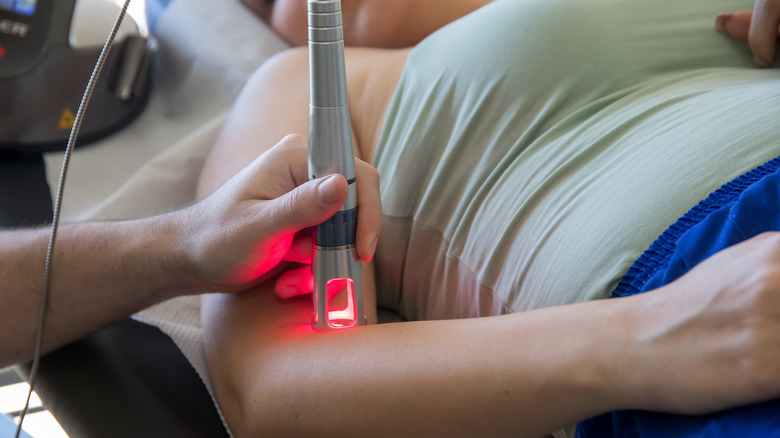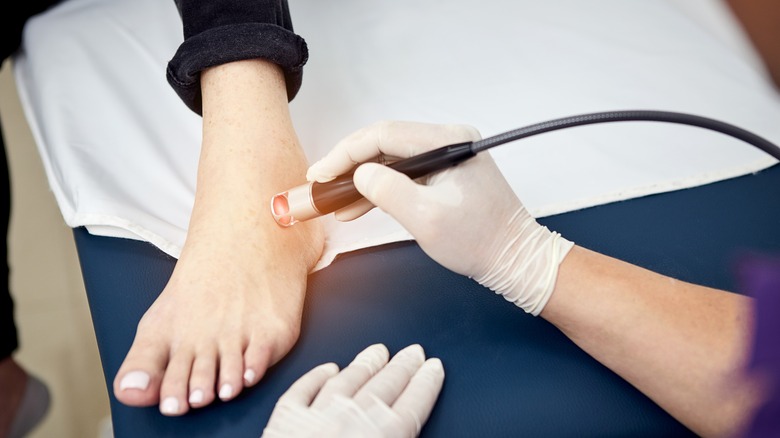What Conditions Can Be Treated By Cold Laser Therapy?
Cold laser therapy, also known as low-level laser therapy (LLLT), is a type of medical treatment that uses low light levels at specific wavelengths to stimulate healing in the body, per Spine-Health. It is a non-invasive treatment that can penetrate the skin and stimulate the cells, which can help to reduce pain and inflammation and promote healing.
According to a 2019 study published in the journal, Photobiomodulation, Photomedicine, and Laser Surgery, low-level lasers for medical treatment date back to the 1960s. They began when Endre Mester, a Hungarian physician, discovered that low-level lasers could stimulate hair growth in mice. Since then, researchers have studied the effects of low-level lasers on a variety of medical conditions.
The therapy is non-invasive, and the length of treatment can vary depending on the condition being treated, but it typically takes around 30 minutes, says MedicalNewsToday. While research into its effectiveness is ongoing, some sources do attest to its efficacy. As such, it is an important area of research and development for medical professionals and scientists looking for new ways to improve patient health and well-being.
Conditions treated with cold laser therapy
One of the primary uses of cold laser therapy is for pain relief. It can be used to treat acute and chronic pain, including that linked to fibromyalgia, carpal tunnel syndrome, and osteoarthritis, according to a 2015 study published in the journal MedCrave Online Journal of Orthopedics & Rheumatology. The therapy works by reducing inflammation and increasing blood flow to the affected area, which can help to speed up the healing process, per Healthline.
Cold laser therapy has also been shown to promote wound healing. Increasing blood flow to the affected area and stimulating tissue repair and regeneration can be used to treat a variety of wounds, including ulcers, according to a 2018 book called "Chronic Wounds, Wound Dressings and Wound Healing." Rheumatoid arthritis (RA) is another condition that can be treated with cold laser therapy along with sports injuries, including sprains, strains, and tendonitis, says Healthline.
How cold laser therapy works
To treat an injured area, the laser is positioned directly over the affected region. The laser then emits low-level light of varying wavelengths which passes through the various skin layers, including the dermis, epidermis, and subcutaneous tissue or fat, according to Spine-Health. The light absorbed by the body tissue promotes a reaction that triggers regeneration in the damaged cells.
For treating surface-level tissue, wavelengths ranging from 600 to 700 nanometers are commonly used, while wavelengths ranging from 780 to 950 nanometers are utilized for the deeper layers, explains Healthline.
The overall effectiveness of the treatment may vary depending on your condition, and it may not be suitable for everyone. Your healthcare provider can help you determine if cold laser therapy is appropriate for your condition and can provide you with more information on the benefits and risks of this treatment. They can also recommend alternative treatment options based on your individual needs and medical history.



